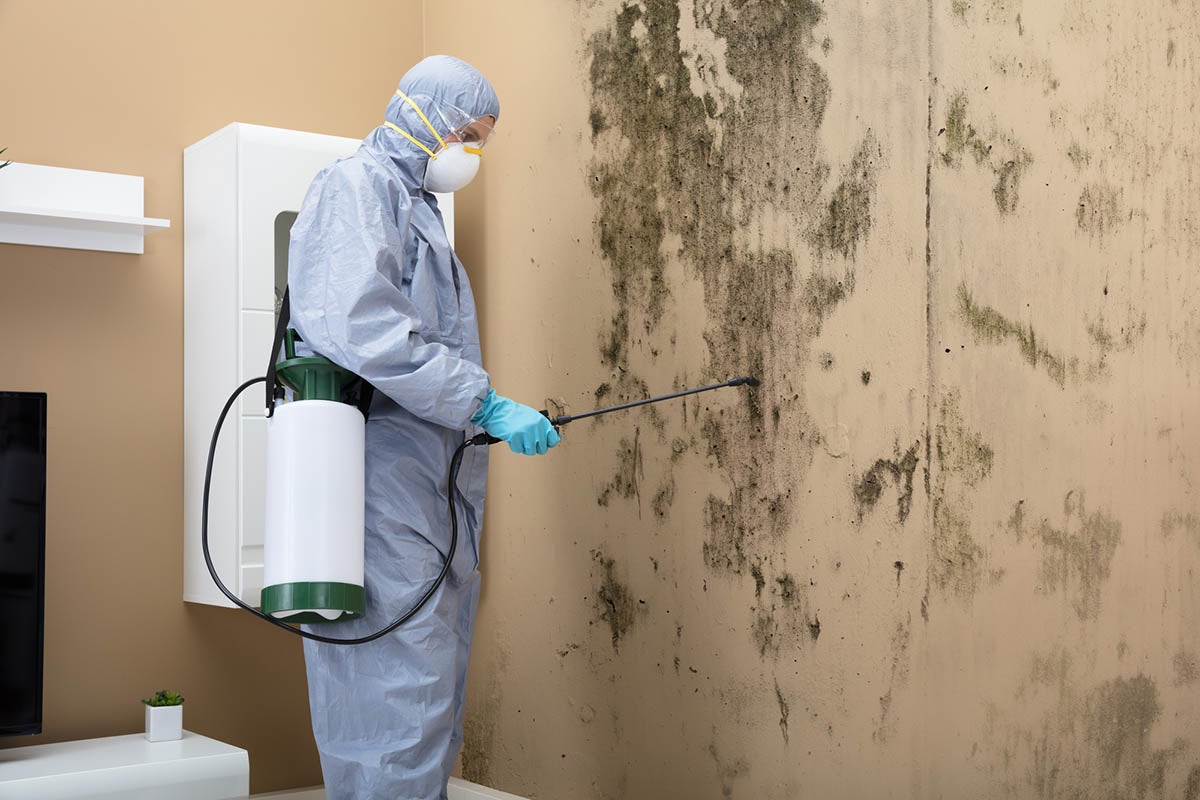Crafting an In-depth Post Mold Remediation Report
Crafting an In-depth Post Mold Remediation Report
Blog Article
Your Ultimate Guide to Article Mold And Mildew Removal Methods
In the aftermath of mold invasion, recognizing exactly how to successfully get rid of the mold and avoid its reoccurrence is vital for preserving a healthy interior environment. From selecting the ideal cleansing and decontaminating methods to implementing approaches for long-term mold prevention, each step in the removal journey plays a crucial role in making certain an effective outcome.
Understanding Post-Mold Remediation Refine
After finishing the mold and mildew removal procedure, it is critical to comprehend the post-mold removal methods that are needed to ensure a detailed and effective cleanup. Once the mold and mildew has actually been gotten rid of, the following action includes cleaning and disinfecting the impacted locations to stop any type of regrowth of mold. This includes using specialized cleansing representatives to wipe down surfaces and eliminate any type of staying mold spores. It is important to dry out the location totally to dissuade the development of mold and mildew in the future (After mold remediation). Appropriate ventilation and dehumidification can assist in this process.
Furthermore, performing a final assessment post-remediation is vital to make sure that all mold has been efficiently eliminated. This inspection ought to entail an extensive aesthetic check in addition to perhaps air sampling to verify the lack of mold and mildew spores in the air. Additional remediation may be needed if the examination reveals any type of sticking around mold and mildew. Lastly, informing passengers on safety nets such as managing wetness degrees and without delay addressing any water leaks can assist keep a mold-free setting.
Efficient Cleaning and Sanitizing Approaches

Preventing Future Mold Development

Value of Correct Air Flow
Proper ventilation plays a crucial role in stopping moisture accumulation, a vital element in mold development within indoor environments. Efficient ventilation systems aid eliminate excess humidity from the air, minimizing the chances of mold and mildew spores discovering the dampness they need to sprout and spread. Without ample ventilation, interior spaces can come to be a breeding place for mold and mildew, resulting in possible health dangers and structural damage.
By making certain appropriate air blood circulation, ventilation systems can likewise aid in drying out wet locations much more promptly after water damage or flooding occurrences, further discouraging mold development. Post Mold Remediation. Precede like bathrooms, kitchen areas, basements, and attic rooms where wetness levels have pop over to this site a tendency site to be greater, mounting and keeping effective ventilation systems is important in stopping mold and mildew problems

Monitoring and Upkeep Tips
Offered the important function that proper air flow plays in stopping mold development, it is critical to develop effective surveillance and maintenance tips to make certain the ongoing functionality of air flow systems. Regular inspections of air flow systems should be performed to check for any type of signs of obstructions, leaks, or breakdowns that can hamper proper air movement. Monitoring moisture levels within the building is likewise crucial, as high moisture can contribute to mold and mildew growth. Setting up a hygrometer can aid track humidity degrees and alert home owners to any type of spikes that might need focus. Additionally, making certain that air filters are frequently cleansed or replaced is crucial for maintaining the effectiveness of the air flow system. Applying a timetable for routine upkeep jobs, such as duct cleaning and cooling and heating system evaluations, can aid prevent problems prior to they rise. By staying proactive and alert to the condition of air flow systems, property owners can successfully minimize the risk of mold regrowth and preserve a healthy and balanced interior setting.
Final Thought
Finally, post-mold removal techniques are important for making certain a clean and safe environment. dig this Comprehending the procedure, executing reliable cleansing and disinfecting methods, preventing future mold development, preserving correct air flow, and normal surveillance are all vital steps in the remediation procedure. By following these standards, you can efficiently eliminate mold and mildew and stop its return, promoting a healthy living or functioning area for all owners.
In the after-effects of mold and mildew problem, knowing how to successfully get rid of the mold and mildew and stop its reoccurrence is critical for keeping a healthy and balanced indoor atmosphere. When the mold and mildew has actually been eliminated, the following step involves cleaning and disinfecting the impacted locations to stop any regrowth of mold and mildew - Post Mold Remediation Report. After eliminating noticeable mold and mildew development, it is critical to clean up all surfaces in the affected location to remove any type of continuing to be mold and mildew spores. To even more boost mold and mildew prevention procedures, it is important to attend to underlying problems that initially led to mold and mildew advancement.Provided the vital role that correct air flow plays in protecting against mold development, it is important to develop efficient monitoring and maintenance tips to ensure the ongoing capability of air flow systems
Report this page